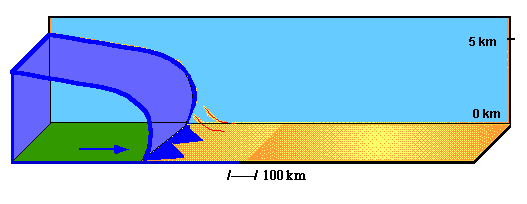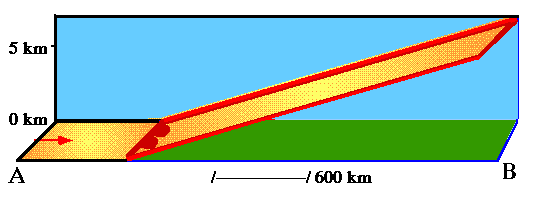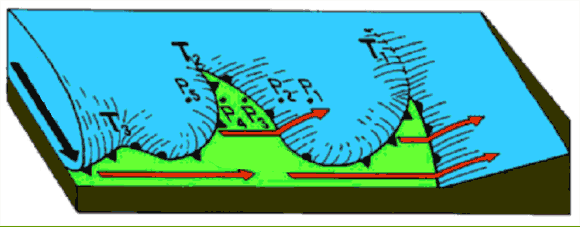 > ENC Master > Climate Encyclopaedia > Weather > basics > 1. Weather & Fronts > * Worksheet 1
> ENC Master > Climate Encyclopaedia > Weather > basics > 1. Weather & Fronts > * Worksheet 1
 |
|
|
|
|
|
|
|
WeatherBasics |
Worksheet: Warm and cold frontsSheet 1: cold fronts |
|
You have read about cold and warm fronts in the previous chapter. |
Exercise:Have a look at both animations and compare the cold front with the warm front! |
 |
|
Animation of a cold front, author: Dr. Horst Rudolf, university of Bielefeld in cooperation with his pupils
|
 |
|
source: http://www.learn-line.nrw.de/angebote/klima/medio/bilder/wfront.gif |
|
The following picture shows a cross-section and helps you to understand the mechanism of a warm and a cold front: |
 |
|
crosssection of warm and cold front (red arrow = warm air / black arrow = cold air)
|
|
Exercise:On the left side of the page the pictures show the passage of a cold front. Click on the picture to enlarge it. The text on the right side of the page describes the different steps. Add the missing words in the text.
|
|
Missing words15 degrees, cold, cold, colder, colder, cooler, clouds, drier, hail, rain, thunderstroms, tornadoes, towering clouds form, warm, warmer Passage of a cold front:Cold fronts occur when a .............. air mass replaces a ................ air mass. In a cold front the .............. air follows the warm air, and, because .................. air is denser, pushes ................ air out of its way, forcing the warm air to rise. The lifting warm air mass becomes ................, and ................. start to form. Precipitation at cold fronts are usually heavier although less extensive (50-70 km) and less prolonged. The reason for this is that the uplift of warm air there is stronger due to the undercutting of cold air, so......................................., and .........., ......................................, ................ and ............................ can occur. The air behind a cold front is noticeably .......................... and ................... than the air ahead of it. When the cold front passes through, temperatures can drop more than ........................... within the first hour.
|
About this page:- Author: Dr. Yvonne Schleicher - University of Nürnberg - Germany
|

